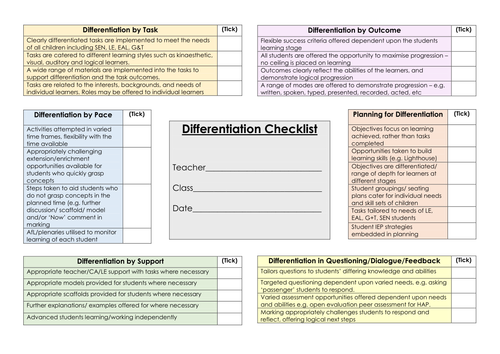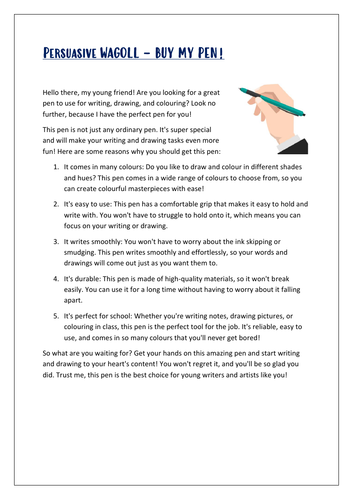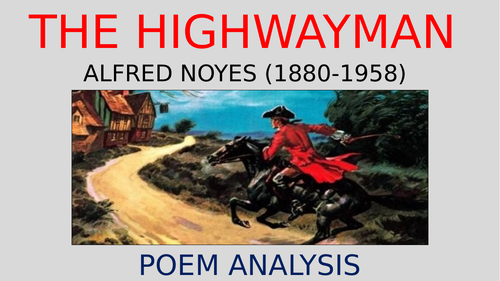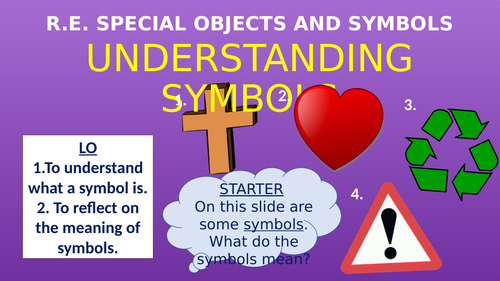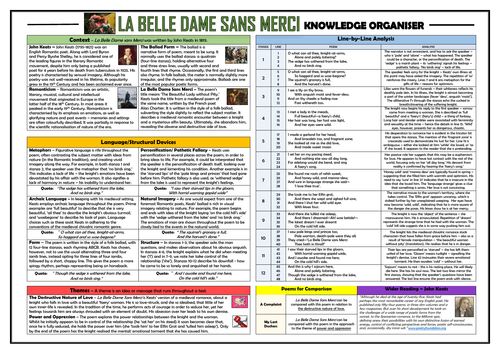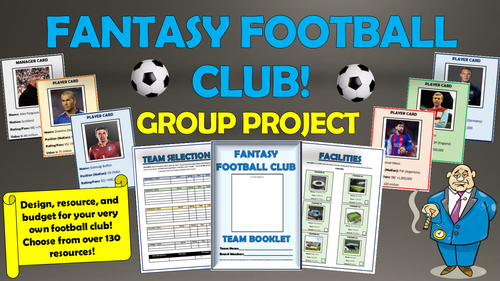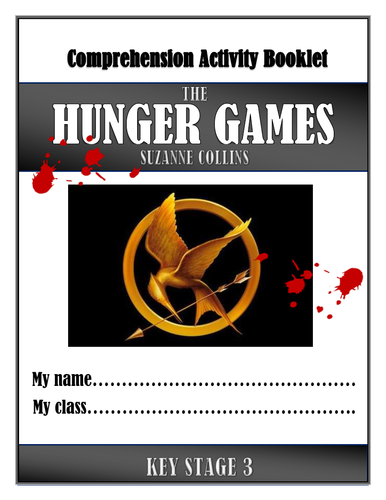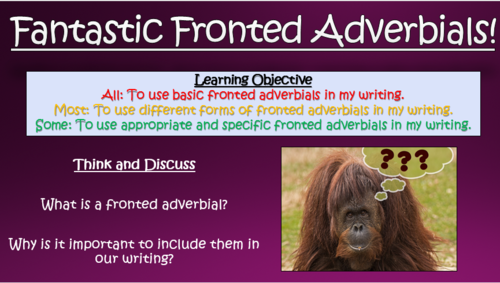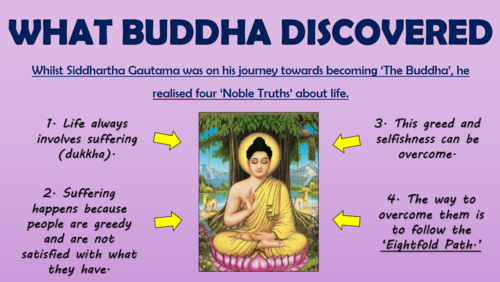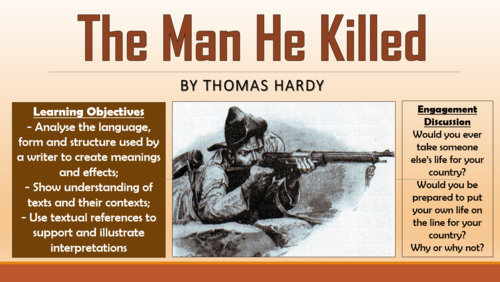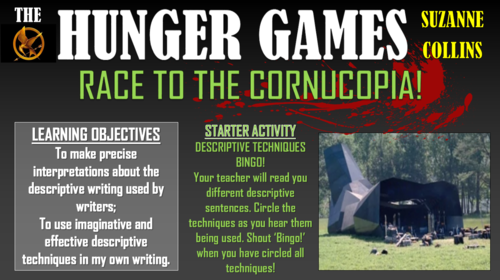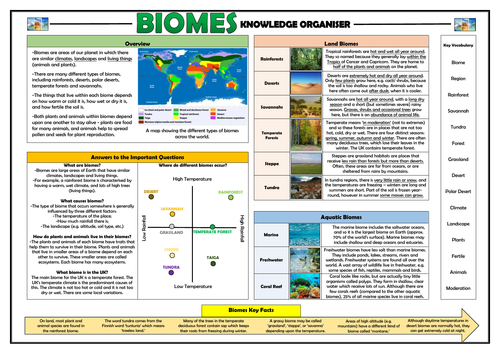
3k+Uploads
1906k+Views
2238k+Downloads
All resources

Vincent van Gogh KS1 Knowledge Organiser!
This clear, detailed and visually-appealing resource offers a complete reference point for students learning about the artist Vincent van Gogh, as a part of their art and design study.
It contains comprehensive sections on:
-Biography of the Artist;
-Styles and Techniques;
-Vincent van Gogh Timeline;
-Significant Works;
-Key Vocabulary;
-How do I create art like van Gogh?
This resource can be adapted for all ages, but was originally designed for KS1 children.
The resource is designed to be printed onto A3, and is provided as both a PDF and a Word version (so that you can edit if you want to). All images used are licensed for commercial use and are cited on a separate document (included).

Learning Walk/ Teacher Development Checklists
These comprehensive checklists have been created to aid school leaders when performing learning walks with a particular focus e.g. questioning, differentiation, etc. Clearly structured and organised, they present a central idea surrounded by a breakdown of a number of its key components.
For the user, this layout provides a simple reference list of each of the desirable skills, categorised appropriately. The checklists also provide an alternative to regular feedback methods, which often focus too heavily on the standard or ‘judgement’, as opposed to being a developmental tool.
Alternatively, these are really handy for teachers looking to develop their practice in the key teaching areas listed below. Included in the pack are checklists for:
-Questioning
-Differentiation
-Utilising Resources (including support staff)
-Engagement
-Building Literacy Skills
-Planning and Expectations
-Building Learning Power
-A blank template for you to design your own based upon your own focus
Note: The checklists offer a range of desirable strategies that teachers should look to implement over time - it would be damaging to expect teachers to utilise each of these strategies in every lesson!
Many Thanks
Bundle Sale

Edexcel Conflict Poetry Knowledge Organisers Huge Bundle!
THIS BUNDLE CONTAINS KNOWLEDGE ORGANISERS FOR ALL 15 OF EDEXCEL CONFLICT POEMS!
These clear, detailed and visually-appealing knowledge organisers offer complete reference points for students learning or revising the following poems from the Edexcel 'Conflict’ anthology:
Exposure - Wilfred Owen;
Catrin - Gillian Clarke;
The Charge of the Light Brigade - Alfred, Lord Tennyson;
Poppies - Jane Weir
War Photographer - Carole Satyamurti
Belfast Confetti - Ciaran Carson
The Destruction of Sennacherib - Lord Byron
Cousin Kate -Christina Rossetti
The Man He Killed - Thomas Hardy
A Poison Tree -William Blake
What Were They Like? - Denise Levertov
No Problem - Benjamin Zephaniah
The Prelude (Extract) - William Wordsworth
Half-caste - John Agard
The Class Game - Mary Casey
Each organiser contains a number of detailed, clear, and colourful sections explaining the key elements of the poem:
Context;
Line-by-Line Analysis;
Poetic Devices/ Language Devices;
Themes;
Form/Structure;
Poems for Comparison;
The Poet’s Influences.
The resources are designed to be printed onto A3, and are provided as both PDFs and Word documents (so that you can edit should you wish to). All images used are licensed for commercial use and are cited on a separate document (included).

KS2 Persuasive Writing Example Texts! (WAGOLLs)
This original, imaginative and purposeful range of WAGOLL (what a good one looks like) texts have been created to provide model examples of effective persuasive writing.
There are eight original example texts in total, modelling good practice for a varied range of persuasive activities. They include:
Buy My Pen
Visit the Maldives
Letter Against A New Heathrow Runway
Dragon’s Den Pitch - Lemonade Stand
Roald Dahl - The Best Author Ever
Stay at the Old Swan, Monkton
Make Sure You Recycle
Let’s Stop Bullying Together
Each example contains a range of apt persuasive devices, for example rhetorical questions, lists of three, personal pronouns, compounding connectives and many more.
Each of the texts is provided as PDFs (to protect the original formatting) and as Word files (in the zip folders - so that you can edit if you want to).

The Highwayman - Poem Analysis!
This comprehensive analysis enables students to understand the key content, language and structural features of Alfred Noyes’ poem ‘The Highwayman.’
The resources is comprised of a 24-slide PowerPoint presentation, which includes:
-Contextual Information: The Poet/ Writing the Poem/ Highwaymen
-Detailed Stanza-by-Stanza Analysis of the Poem
-Noyes Key Messages
-Questions for Further Consideration
Annnotations are colour-coded for ease of reference. The resource is tried and tested, and helps to ensure that students develop a well-rounded understanding of the poem and its meanings.
A PDF version of the resource is also included, to protect formatting in case of differences in software. All images are licensed for commercial use.

Understanding Symbols - KS1 RE Lesson!
In this engaging and informative lesson, children learn what symbols are, and begin to interpret and reflect on the meaning of symbols. They apply this knowledge in creating their own symbols, considering what the objects/ animals, colours and shapes that they select represent.
I used this as an introductory lesson, before then going into more depth about different religious symbols in the subsequent lessons. Children enjoyed it and it gave them a solid understanding of symbols to build on in the next steps of their learning.
This resource pack contains a comprehensive and colourful 15-slide Powerpoint, which guides teachers and students through the learning activities. A template worksheet is also provided (in Word and PDF) for the students to create and describe their symbol.
In the past, I have used this lesson with children in both Years 1 and 2 - the key learning is aligned with national expectations for RE, and also the content prescribed by most diocese regions. All images are licensed for commercial use, and are cited on the final slide.

Dr Jekyll and Mr Hyde Knowledge Organiser/ Revision Mat!
This detailed and visually-appealing resource offers a complete reference point for students learning or revising Robert Louis Stevenson's 'Strange Case of Dr Jekyll and Mr Hyde.' It contains comprehensive sections on:
- Context;
- Chapter by Chapter Summary (with quotes);
- Main Characters;
- Themes;
- Stevenson's Language Devices;
- Gothic Features.
Key words and ideas are underlined for easy reference. The resource is designed to be printed onto A3, and is provided as both a PDF and a Word version (so that you can edit if you want to). All images used are licensed for commercial use and are cited on a separate document (included).

La Belle Dame Sans Merci - Knowledge Organiser/ Revision Mat!
This detailed and visually-appealing resource offers a complete reference point for students learning or revising John Keats’ relationships poem 'La Belle Dame Sans Merci.’ It contains comprehensive sections on:
Context;
Line-by-Line Analysis;
Poetic Devices/ Language Devices;
Themes;
Form/Structure;
Poems for Comparison;
Links to Wider Reading.
Key words and ideas are underlined for easy reference. The resource is designed to be printed onto A3, and is provided as both a PDF and a Word version (so that you can edit if you want to). All images used are licensed for commercial use and are cited on a separate document (included).

Fantasy Football Club Group Project!
A Russian billionaire, Asman Veryrich, has approached you about setting up a new football club!
This exciting, engaging investigation activity allows students to control the direction of their own learning, through speaking, listening, discussing, and reasoning. I initially created these resources to provide something interesting for the students to engage with for their English Speaking and Listening discussions, but it has since been used across Maths, Art and Design, and PSHE departments, as well as by form groups and holiday activity groups, to build teamwork and collaboration skills.
Students get involved in all of the fun aspects of designing and setting up a new football club, including selecting a team of players, a manager, a stadium, and a training ground. They also design the team's club badge and football kits. They also need to use their skills of literacy to read and understand key evidence, and skills of numeracy to ensure that they keep their expenses within budget! What is more, groups can compete against one another to create the most successful team in the league, as all of the resources that they choose can help them to acquire valuable league table points!
Included in this resource pack are:
- Full PowerPoint lesson talking students through the process;
- An 8 page team booklet, used to create their designs and calculate their budgets;
- A pack of 96 player cards and 12 manager cards to select from (a combination of new and classic footballers are included, to ensure that this will never be outdated);
- Budget and recording sheets to track their progress;
- An A3 football pitch to strategise and select their team.
Considering the time and effort that it took to create these resources, I think that they offer exceptional value. Whenever I have used this activity before, it has taken at least 3-4 lessons, including the introduction, design process, presentations, and evaluation. I originally have used this with mixed ability Year 9 and 10 groups, but colleagues have adapted it easily for students of all key stages.
All images have been cited at the end of the PowerPoint presentation and are licensed for commercial use.

The Hunger Games KS3 Comprehension Activities Booklet!
This resource booklet contains a wide range of age-appropriate, engaging, and meaningful comprehension activities for use throughout the reading of Suzanne Collins' 'The Hunger Games.' Teachers have found them particularly useful in comprehension or guided reading sessions. They are perfect for aiding the progress of children towards meeting the KS3 expectations within the new National Curriculum framework. Children have found these resources extremely engaging, and for teachers there is explicit information within each task regarding which comprehension strands the task is designed to demonstrate. They also relate to key extracts, characters, and themes from the story, ensuring that children gain a deep understanding of the text.
Activities within the booklet include:
- 'Links to the Historical Myth of Theseus and the Minotaur' - to enable students to demonstrate that they can: 'Know the purpose, audience and context of the writing and drawing on this knowledge to support comprehension.'
- 'Collins' Description' - to enable students to demonstrate that they can: 'Know how language, including figurative language, vocabulary choice, grammar, text structure and organisational features, present meaning.'
- 'President Snow' and 'Peeta Mellark' - to enable students to demonstrate that they can: 'Study setting, plot, and characterisation, and the effects of these.'
- 'Vocabulary Inspector' - to enable students to demonstrate that they can: 'Learn new vocabulary, relating it explicitly to known vocabulary and understanding it with the help of context and dictionaries.'
Plus many, many more activities (the booklet is over 20 pages in length!) I've also added it as a PDF in case the formatting differs on your computer.
All images are licensed for commercial use, and are cited on a separate document (included).

Buddhism Knowledge Organiser!
This detailed and visually-appealing resource offers a complete reference point for students learning about/ revising their understanding of Buddhism. It contains comprehensive sections under the following headings:
-Buddhism Overview;
-Buddhist Beliefs;
-Buddhism Timeline;
-Key Vocabulary;
-Top Ten Facts;
-Answers to the Important Questions.
Key words and ideas are underlined for easy reference. The resource is designed to be printed onto A3, and is provided as both a PDF and a Word version (so that you can edit if you want to).

Fantastic Fronted Adverbials!
This engaging and detailed resource pack has been designed to make the learning of fronted adverbials (particularly prominent in the new curriculum) easily accessible, engaging and interesting for all children. Throughout the lesson, students learn to improve their skill at using appropriate, concise, and precise fronted adverbials within their own writing compositions. In addition to the comprehensive lesson, resources, and plan, it also includes a fronted adverbials writing mat to assist students in building their extended writing skills.
The lesson follows a clear, logical, bite-size learning journey, which guides students towards differentiated learning objectives. Over the course of this journey, they become able to:
- Define what fronted adverbials are;
- Identify fronted adverbials in sentences;
- Analyse and evaluate what it is that makes some fronted adverbials more effective than others;
- Write an extended piece with the employment of fronted adverbials;
-Peer/self-assess learning attempts.
This resource pack includes:
- A visually engaging whole-lesson PowerPoint presentation;
- A clear and interesting worksheet for the development task;
- An interesting short story for students to analyse;
- A hyperlink to an engaging and heart-warming video through a hyperlink in the presentation;
- A detailed lesson plan, complete with what the teacher and students should aim to achieve at each stage of the lesson.
All images are licensed for commercial use, and are cited on the final slide of the PowerPoint/ the bottom of worksheets.

The Buddha - The Eightfold Path!
In this engaging lesson, students gain a deeper understanding of the Noble Eightfold Path - the eight practices governing the lives of Buddhists.
The learning is guided by a clear and colourful PowerPoint presentation, which guides students through the following step-by-step journey:
-Defining what the Eightfold Path is;
-Breaking down the different practices that make up the Eightfold Path;
-Establishing why Buddhists follow the Eightfold Path;
-Thinking about how they can apply the principles of the Eightfold Path to their own lives;
-Considering a deeper thinking extension question;
-Completing a plenary to assess their understanding.
This resource pack contains a comprehensive Powerpoint, alongside an eye-catching worksheet.
In the past, I have used this lesson with children from across Key Stage 2 - the key learning is aligned with curriculum expectations for RE, and also the content prescribed by most diocese regions. All images are licensed for commercial use.

War Horse KS3 Comprehension Activities Booklet!
This resource booklet contains a wide range of age-appropriate, engaging, and meaningful comprehension activities for use throughout the reading of Michael Morpugo’s ‘War Horse.’ Teachers have found them particularly useful in comprehension or guided reading sessions. They are perfect for aiding the progress of children towards meeting the KS3 expectations within the new National Curriculum framework. Children have found these resources extremely engaging, and for teachers there is explicit information within each task regarding which comprehension strands the task is designed to demonstrate. They also relate to key extracts, characters, and themes from the story, ensuring that children gain a deep understanding of the text.
Activities within the booklet include:
‘Context: World War I’ - to enable students to demonstrate that they can: ‘Know the purpose, audience and context of the writing and drawing on this knowledge to support comprehension.’
‘Morpugo’s Description’ - to enable students to demonstrate that they can: ‘Know how language, including figurative language, vocabulary choice, grammar, text structure and organisational features, present meaning.’
‘Captain Nicholls Character Profile’ - to enable students to demonstrate that they can: ‘Study setting, plot, and characterisation, and the effects of these.’
‘Vocabulary Inspector’ - to enable students to demonstrate that they can: ‘Learn new vocabulary, relating it explicitly to known vocabulary and understanding it with the help of context and dictionaries.’
Plus many, many more activities (the booklet is 23 pages in length!) I’ve also added it as a PDF in case the formatting differs on your computer.
All images are licensed for commercial use, and are cited on a separate document (included).
Bundle Sale

DT Mechanisms - KS1 Sliders and Levers Bundle!
This engaging and purposeful series of lessons enables children to create working slider and lever mechanisms.
The resources include 3 lessons and an evaluation sheet (leading children through the ‘research, design, make, evaluate’ process) and a corresponding knowledge organiser.
I used a polar theme when teaching this unit, as it was our topic at the time, but the resources can easily be adapted to fit your own particular project.
Each PowerPoint is eye-catching and comprehensive, and all worksheets templates are included as in both Word and PDF.
These lessons were originally created for children in years 1-2, but may be adapted for slightly older and younger year groups.

The Man He Killed - Thomas Hardy!
This engaging, comprehensive lesson aims to improve students’ understanding of Thomas Hardy’s poem ‘The Man He Killed’ with particular focus upon the language, structure, and subject matter employed within the poem. By the end of the lesson, students demonstrate their knowledge of the text analytically, through assured, appropriate, and sustained interpretations.
The lesson follows a step-by-step learning journey, in which children learn through:
Considering the emotional impact of war on the individuas involvedl;
Securing contextual understanding of The Boer Wars and Thomas Hardy’s life and beliefs;
Reading and interpreting the poem, using a provided line-by-line analysis, and interactive group activities;
Developing their understanding through inferring and analysing key language and structural choices;
Analysing how the futility of war is conveyed through Hardy’s language and structure choices;
Self/ Peer assessing each other’s learning attempts.
Included is:
Whole lesson PowerPoint - colourful and substantial; (including hyperlinks to informative and videos)
Copy of poem (freely available online);
Deeper thinking worksheet;
Analysis template with success criteria for creating well-structured responses;
Research worksheet;
Comprehensive lesson plan.
All resources are provided as word documents (for easy editing) and PDF documents (to ensure consistency of formatting between computers).
There are also opportunities for group learning, peer assessment, and whole class discussion. This was originally taught to middle-ability year 10 and 11 groups, but can easily be differentiated for groups of different ages and abilities.
All images are licensed for commercial use, and image rights are listed on the last page of the presentation.

The Hunger Games - Race to the Cornucopia! (Descriptive Writing Lesson)
This engaging and informative lesson enables students to compose sophisticated, imaginative creative writing, through producing a first person account about competing in the opening stages of The Hunger Games. In order to do so, students first analyse the descriptive writing devices and sentence structures used by Suzanne Collins in Chapter 11 of The Hunger Games - the section in which the Hunger Games commence – before applying what they have learnt to their own compositions.
The lesson follows a step-by-step learning journey, in which children learn through:
Defining each of the different types of descriptive devices, through playing a fun, interactive bingo game;
Reading an extract from Chapter 11 of the text (provided) which describes the moments immediately before and after the Hunger Games commence;
Identifying the language techniques used in the extract to paint an image of place in the minds of the readers, and to create the desired atmosphere;
Analysing the effectiveness of each of Collins’ descriptive devices;
Analysing the sentence structures and lengths employed by Collins in the extract;
Creating their own first-person description of the horrific moments at the Cornucopia, before and after the Hunger Games begin;
Peer assessing each other’s learning attempts.
Included is:
Whole lesson PowerPoint - colourful and comprehensive;
Bingo Cards for the starter activity (and host instructions/ questions);’
Extract from Chapter 11 of The Hunger Games;
Structure strips to support the descriptive writing;
Writing to Describe Helpsheet to support the descriptive writing;
Comprehensive Lesson Plan.
All resources are provided in Word (for easy editing) and PDF (to ensure formatting remains fixed between different computers).
There are also opportunities for group learning, speaking and listening, peer assessment, and whole class discussion. I originally used these resources with year 8 classes, however colleagues have used them for between years 5 and 10 with some adaptations.
All images are licensed for commercial use, and image rights are listed on the last page of the presentation.

Simple, Compound and Complex Sentences!
This detailed and engaging lesson enables students to gain an understanding of simple, compound and complex sentences, and to use a variation of sentence types in their own writing for clarity and effect.
Students learn through a number of fun and interactive tasks, which enable them to:
- Define and exemplify simple, compound, and complex sentences;
- Identify them in writing;
- Understand and analyse how different types of sentences can be used for clarity and effect;
- Create a written piece using a variety of sentence structures for clarity and effect;
- Evaluate their use of different sentence structures.
The resources include:
-Visually engaging and comprehensive whole-lesson presentation;
-Resources for the card-sorting activity;
-A model example and analysis worksheet;
-A success criteria;
-Step-by-step lesson plan.
All images are licensed for commercial use, and are cited on the final page of the slide.

The War of the Worlds Knowledge Organiser/ Revision Mat!
This detailed and visually-appealing resource offers a complete reference point for students learning or revising H.G. Wells’ ‘The War of the Worlds.’ It contains comprehensive sections on:
Context;
Chapter by Chapter Summary (with quotes);
Main Characters;
Themes;
Wells’ Language Devices;
Features of Science Fiction Novels.
Key words and ideas are underlined for easy reference. The resource is designed to be printed onto A3, and is provided as both a PDF and a Word version (so that you can edit if you want to). All images used are licensed for commercial use.

KS2 Biomes - Knowledge Organiser!
This clear, detailed and visually-appealing resource offers a complete reference point for students learning or revising knowledge relating to biomes. It contains comprehensive sections on:
-Overview of Biomes;
-Answers to the Key Questions;
-Types of Land Biomes;
-Types of Aquatic Biomes;
-Key Vocabulary;
-Key Facts.
The resource is designed to be printed onto either A4 or A3, and is provided as both a PDF and a Word version (so that you can edit if you want to). All images used are licensed for commercial use. The resource is most suitable for students in KS2 or KS3.


